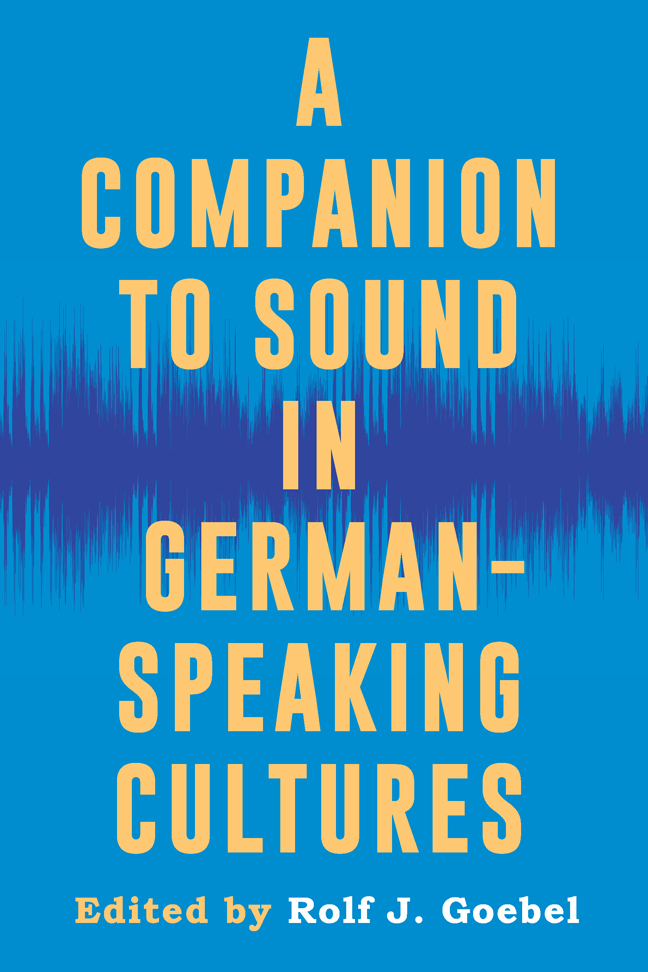Book contents
- Frontmatter
- Contents
- List of Illustrations
- Preface
- Introduction
- Part I Sonic Practices from the Middle Ages to the Nineteenth Century
- Part II Rediscovering the Sounds of Modernism
- Part III Listening to the Unbearable: The Sounds of National Socialism and the Holocaust
- Part IV After the Catastrophe: Sounds in Postwar Germany and Beyond
- Part V Sounds of the Present
- Part VI Epilogue
- Select Bibliography and Further Reading
- Notes on the Contributors
- Index
6 - Tragic Silence and Heroic Clamor: Sound Worlds and Constructed Ethnographies in Fritz Lang's Die Nibelungen (1924)
Published online by Cambridge University Press: 21 February 2024
- Frontmatter
- Contents
- List of Illustrations
- Preface
- Introduction
- Part I Sonic Practices from the Middle Ages to the Nineteenth Century
- Part II Rediscovering the Sounds of Modernism
- Part III Listening to the Unbearable: The Sounds of National Socialism and the Holocaust
- Part IV After the Catastrophe: Sounds in Postwar Germany and Beyond
- Part V Sounds of the Present
- Part VI Epilogue
- Select Bibliography and Further Reading
- Notes on the Contributors
- Index
Summary
I. Introduction
Die Nibelungen stands out within the German film director Fritz Lang's oeuvre for a number of reasons. In addition to being the director's first great success, it is one of his most powerful films, and in all likelihood his most misunderstood. From the eminent film theorist Siegfried Kracauer onwards, this work has often been associated with Nazi and Wagnerian myths of Germanic origins, when in fact it is opposed to Wagner and all that he stood for, at least on the ideological level. It is clear to anyone who watches the film closely that it is open to many read-ings other than the blood and soil one imposed upon it by Hitler's fol-lowers. And once we move beyond the problematic approach of Kracauer, which tends to reduce this and other Weimar films to teleological fore-bodings of authoritarianism, the actual qualities of this film stand out with greater clarity. Die Nibelungen's bold, highly effective cinematog-raphy, revolutionary approach to Germanic myth, and subtle use of what I shall call “figured” or implied sound put Lang on the map of Europe's emerging directors when it first appeared in 1924. Lang's first foray into epic cinema, this film had an unmistakable impact on others working in an analogous direction, such as Sergei Eisenstein, in Alexander Nevsky and Ivan the Terrible.
In what follows I explore hitherto overlooked aspects of Lang's misconstrued epic by examining its artistic response to, and trenchant critique of, the ideological underpinnings of Wagner's music-drama. Both the response and the critique are the result of an implicit transformation of evolutionary schemes of the origin, development, and decline of peoples elaborated by the late-nineteenth and early twentieth centuries’ ethnological discourse and related speculation on the roots of “civilized” Europe. By focusing on these facets of the film, my aim is not to reset the balance between the aesthetic and the ideological dimensions of Die Nibelungen. My objective is more modest: to seek to show how Lang's strategies of sonic figuration rework Wagnerian ideas of the Gesamtkunstwerk and the leitmotiv in accordance with the novel technical conditions and aesthetic possibilities of film.
Moving from these considerations, this essay seeks to clarify the implications of the sonic as a specific perceptual attribute and narrative marker in Die Nibelungen.
- Type
- Chapter
- Information
- A Companion to Sound in German-Speaking Cultures , pp. 98 - 116Publisher: Boydell & BrewerPrint publication year: 2023



